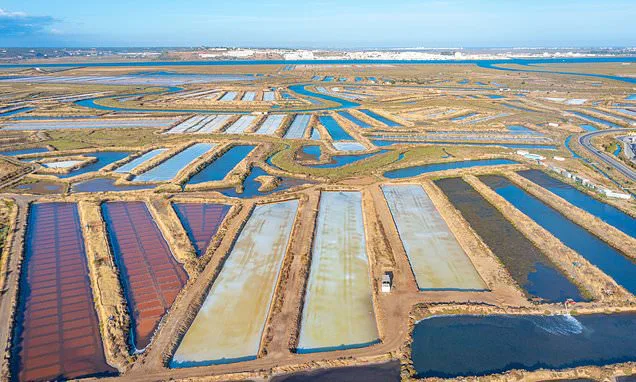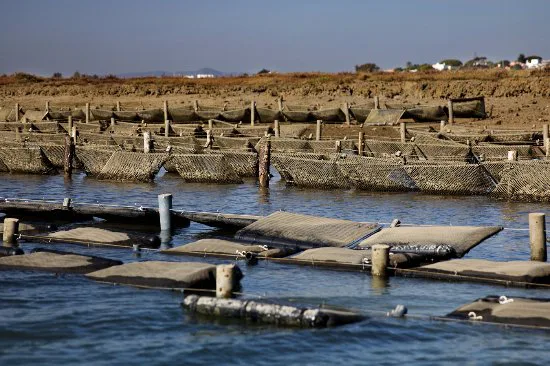Just outside Tavira lies a surreal landscape of salt pans, where seawater is slowly evaporated in shallow basins to produce high-quality sea salt, including the prized “flor de sal.”
You can visit the Salinas do Grelha (Olhão) to learn about the traditional salt harvesting process that dates back to Roman times. Guided tours explain how the pans work and how salt is manually harvested with wooden rakes.
Kids and adults alike are fascinated by the geometric pools and the changing colors caused by algae, minerals, and bacteria. And yes—there’s usually a small shop on-site where you can buy artisanal salt to take home.
If you’re lucky, you might also spot flamingos feeding in the briny water nearby. Combine your visit with a walk or bike ride along the salt pan trails, and end with a cool drink back in Tavira town.







